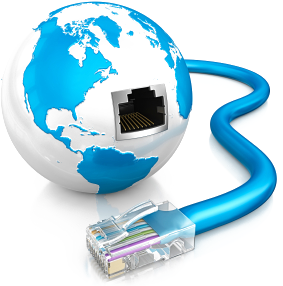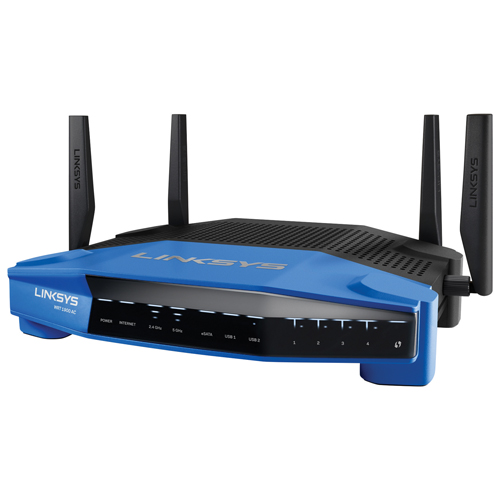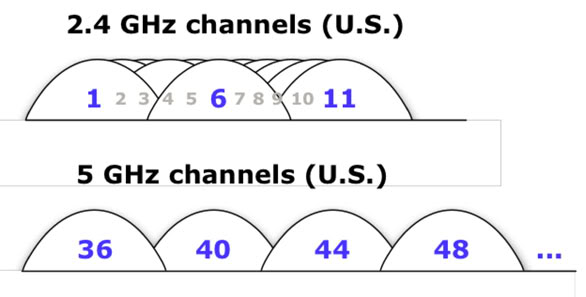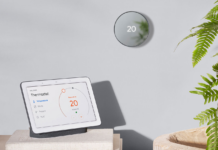
As the technology matures, more people are approaching me to discuss setting up a smart home. Everyone is excited about the newest and best products on the market. However, when our discussion shifts to their current home network, they don’t really know a lot about their setup. Quite simply put, the most important part of the modern smarthome is the most basic feature of all: The network connection.
If you look at your smarthome as though you’re building a house, your network connection and signal strength would be the foundation while the devices themselves would be the rooms and roof. Would you rather your home was built on a solid concrete slab or rickety stilts? A solid network (or lack thereof) will easily make or break your smart home. Here’s a look at how you can avoid a rickety stilt foundation and create a smart network for your smarthome.
 Connection means Everything
Connection means Everything
Most Smarthome devices rely heavily on a constant internet connection. They sync up and join your WiFi network in order to communicate with your devices. Most are easy to set up, requiring minimal input from you to set things up. Unfortunately, if you end up making any changes to your WiFi network at home or losing your connection for a lengthy period of time, everything falls apart not unlike that Dog’s Eye View song. Imagine being unable to get into your garage, change the timing of your lights or missing important notifications because your WiFi network is on the blink?
I just went through some WiFi network trouble at home and after having to manually change channels, passwords and the network name, it took me a long time to get everything back to where it was again. In fact, my thermostat hasn’t functioned since it happened but I haven’t really bothered to do anything about it because I don’t need heating when it’s 30 degrees out.
That’s why I stress how important your WiFi network is. You’re probably going to be able to get through your front door fine. Most of the newer keyless entry systems run on batteries and power through local Bluetooth authentication so they sit independent of your internet connection. However, you won’t be able to do much more. Imagine having a Dropcam Pro or a Netatmo camera, getting an important alert and then seeing your live feed is spotty or inconsistent at best?
Honestly, the most important part of creating a smart network for your smarthome is just making sure your internet connection is trustworthy.
 Do you need a new router?
Do you need a new router?
If you’re going to be setting up a fairly big smarthome network, you may need to upgrade your router, especially if you’re still running a Wireless G network and need to upgrade to something newer.
Honestly, I admit I’m a little bit out of my element trying to explain to you what the options are nowadays and what the difference is between them. I’m going to have my colleague Brad Moon (he’ll make another appearance in this blog guaranteed) explain to you what the difference is between Wireless ac and Wireless N networks.
Don’t concern yourself too much with whether you need a dual or tri-band router for the purpose of Smarthome devices though. In my experience, I haven’t seen any smarthome devices that try to calibrate with anything but standard 2.4 GHz networks outside of Belkin’s Wemo Switch. Even then, it wouldn’t pick up on my 5G network and I ended up just configuring it through my regular one.
Don’t forget to change the channel
Those of you in regular detached houses may not encounter this problem often, but for those of you in townhouses and condos, the greatest routers and range extenders can still fall victim to neighbouring signal interference. I hate to generalize, but most of the people in my townhouse complex are a little older, so I can tell that they’ve probably gone the easiest route possible in setting up their networks: Auto-channeling. Just about everybody is just set to channel 1 except for us and that wreaks havoc on our signal if we do the same thing.
Making sure your network isn’t on a polluted channel signal is important. You can set the channel from your router’s admin software. To give you an indication of how the various channels work and overlap, here’s a helpful chart showing you how it works on a standard dual band 2.4GHz and 5G network.

As you can see, Channels 1, 6 and 11 tend to be good choices because they have clean breaks from each other. Our network sits on channel 6 right now and everybody else in range is on 1 or 11, so we’re fairly clear (Shhh don’t tell my neighbours.)
There are programs out there for your PC that will tell you what channel the neighbouring wireless networks are on so you can avoid them. You can find some in the Android app store too but not in the iOS one.
If you live in a larger or awkwardly shaped home, you may run into some trouble with your signal which will definitely mess up your devices’ communication capabilities with the router. You may think your signal strength is good now as you sit in your living room, but if you’re looking at doing things like sticking water sensors in crawlspaces or your attic, you may see very quickly that you’re in trouble.
The biggest problem you’re likely to run into (especially if you have a new router) is that you get weak or completely dead zones in your house the farther you get from the router. I’ve had this issue before and a good range extender fixed that up. The range extender grabs its piece of your WiFi network’s pie and boosts the signal farther and (hopefully) into those dead zones. Some range extenders have guarantees of the distance (square footage) boost they can offer too. Just remember that your range extender cannot boost what it cannot detect, so you need to place it somewhere that you have a strong enough signal from your router that you can then push to the rest of the house. Don’t place this in your dead zones expecting that it will fix things. It MAY be able to pick up a faint signal from the router, but you probably won’t get much of a boost out of it. Range extenders are best placed when they are somewhere between the dead zone and the router, still within healthy range of the router.
If this doesn’t help, you could also consider Powerline Technology. Brad did a and how to use it to your advantage. This is likely to be the costlier option and I’d maybe consider this to be the last resort since it’s a fair bit more involved than a simple range extender.
If you heed this advice, you will be in a very good spot to successfully set up a great network for your Smarthome needs. All that’s left now is to stock your house with the latest Smarthome Products.

 Range Extender
Range Extender

